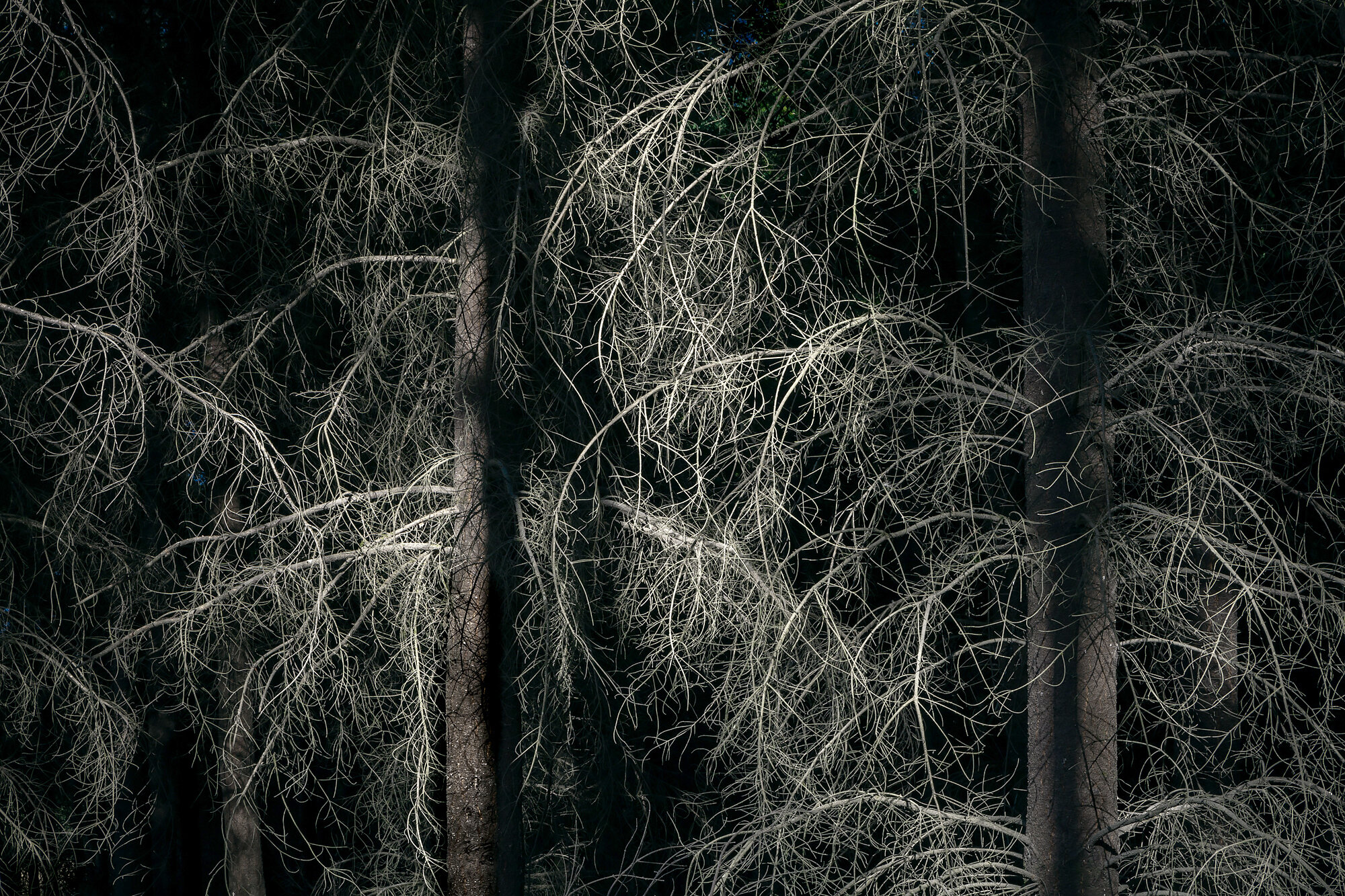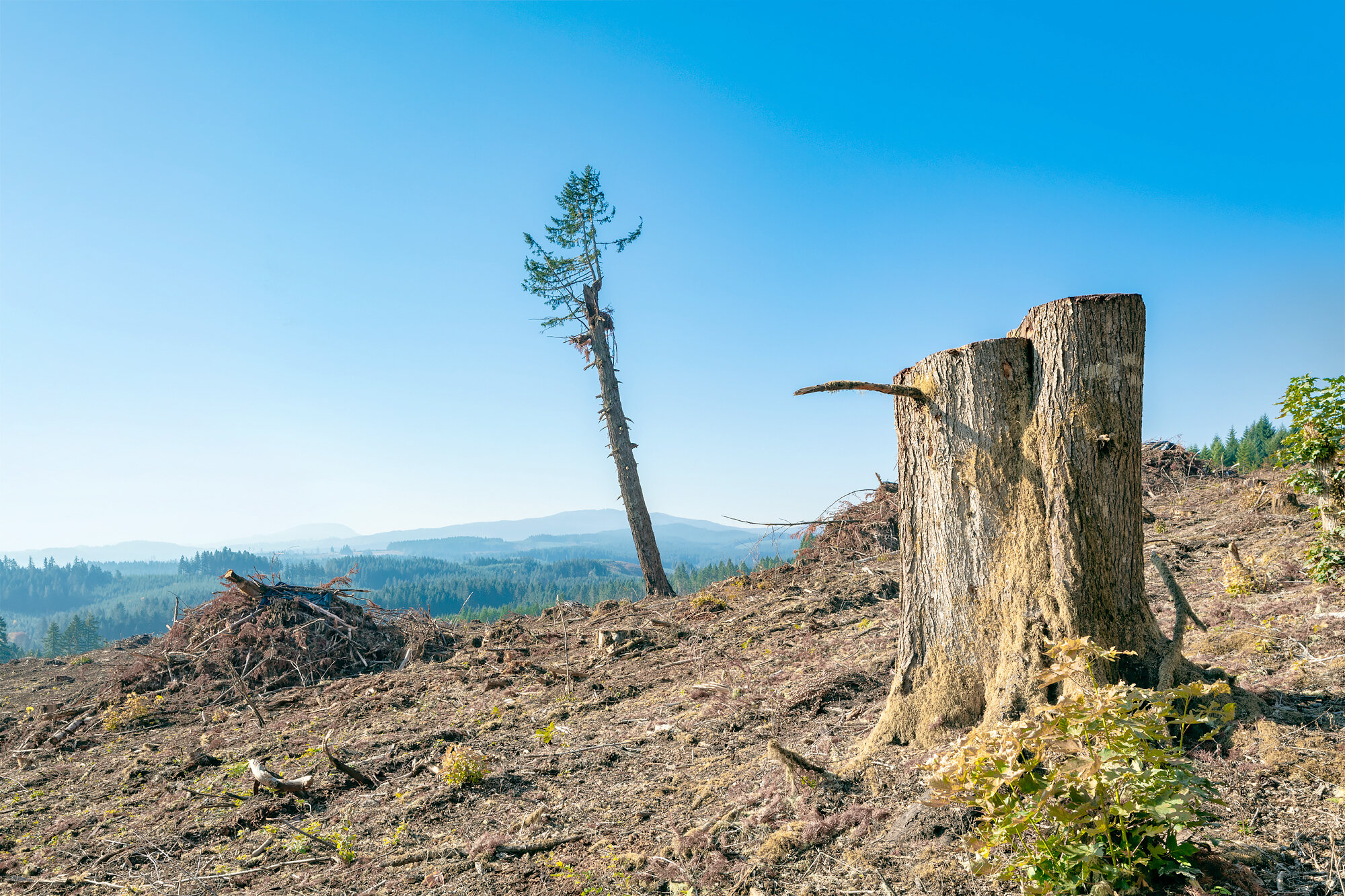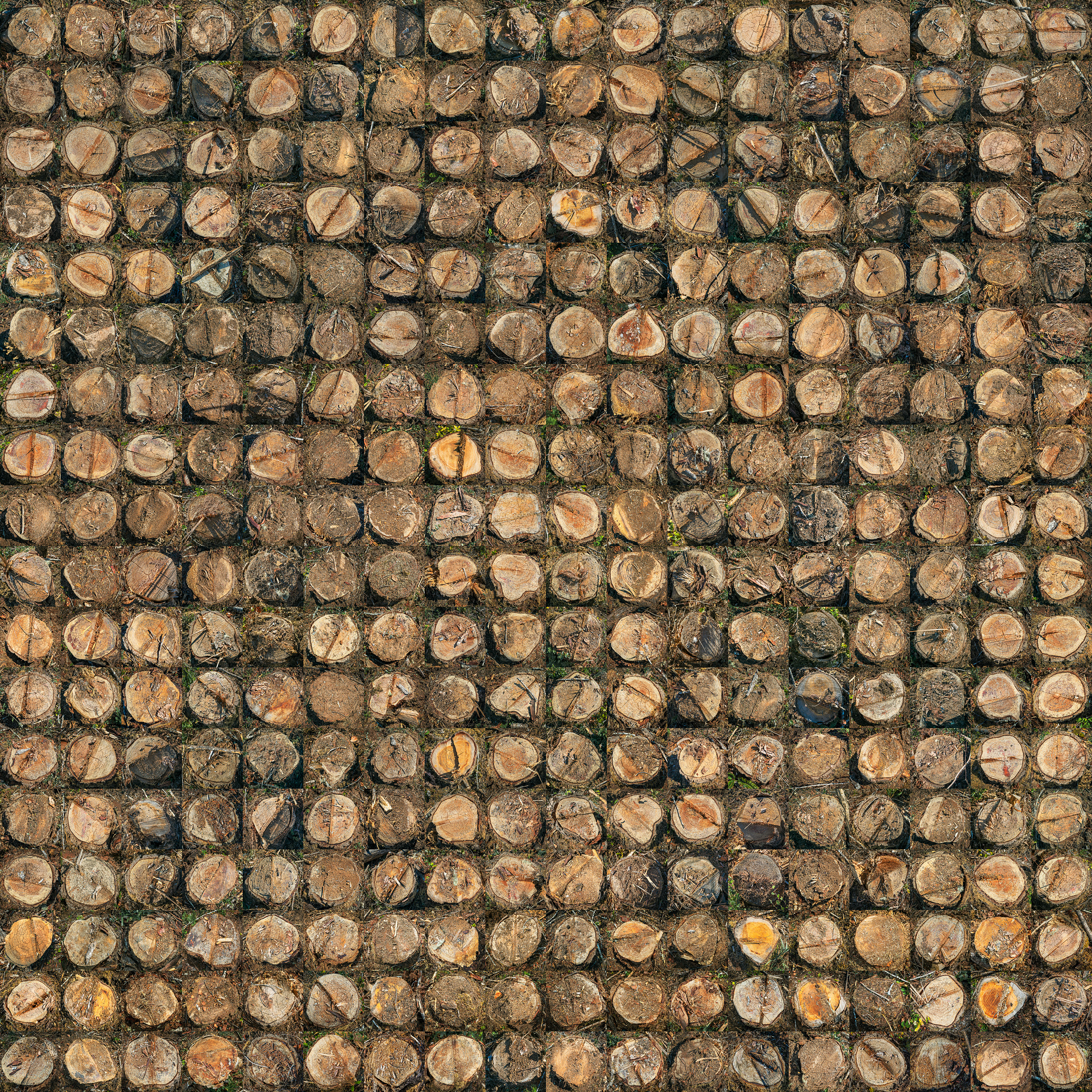




























Your Custom Text Here
Our fairy tales and folk tales depict the forest as a place beyond our human comprehension of time. For millenia we revered and feared the deep mysteries of the forest.
We have lived with forests much longer than we have lived from them.
In the Pacific Northwest our big forests have been stripped of their wild. They are now efficient industrial landscapes planted with engineered seedlings. Landscapes where the wild lumberjack was replaced by articulating feller buncher machines.
Working Forest is a brilliant industry term created about a decade ago designed to phase out the harsher sounding words, logging, cutting and chopping. Working is both a noun and an adjective. Working Forest is malleable enough to allow for calculated wordplay. They grow forests and harvest tree farms. Working Forest is a term that allows users to have it both ways. It’s a term that fits the family with twenty acres of trees to the multi billion dollar corporation.
Working Forest is a term that suggests a future where all land works for us.
These images depict my relationship with a specific Working Forest. A landscape within walking distance of my studio door. A landscape where on one day I round the bend to see light streaming through hundred-twenty foot tall trees. A few weeks later I round the same bend to see ground fog lingering over stumps and slash piles like spirits of the deceased not quite ready to leave. It is a landscape I some times embrace and sometimes abhor.
It is a landscape that now fits our human comprehension of time. It is a landscape always transitioning through cutting, burning and growing. A completed cycle lasts forty years. Two cycles fit neatly into a human lifetime.
I leave my studio and walk for an hour through a landscape both bucolic and broken. A landscape my grandchildren will learn is neither forest, nor working.
Our fairy tales and folk tales depict the forest as a place beyond our human comprehension of time. For millenia we revered and feared the deep mysteries of the forest.
We have lived with forests much longer than we have lived from them.
In the Pacific Northwest our big forests have been stripped of their wild. They are now efficient industrial landscapes planted with engineered seedlings. Landscapes where the wild lumberjack was replaced by articulating feller buncher machines.
Working Forest is a brilliant industry term created about a decade ago designed to phase out the harsher sounding words, logging, cutting and chopping. Working is both a noun and an adjective. Working Forest is malleable enough to allow for calculated wordplay. They grow forests and harvest tree farms. Working Forest is a term that allows users to have it both ways. It’s a term that fits the family with twenty acres of trees to the multi billion dollar corporation.
Working Forest is a term that suggests a future where all land works for us.
These images depict my relationship with a specific Working Forest. A landscape within walking distance of my studio door. A landscape where on one day I round the bend to see light streaming through hundred-twenty foot tall trees. A few weeks later I round the same bend to see ground fog lingering over stumps and slash piles like spirits of the deceased not quite ready to leave. It is a landscape I some times embrace and sometimes abhor.
It is a landscape that now fits our human comprehension of time. It is a landscape always transitioning through cutting, burning and growing. A completed cycle lasts forty years. Two cycles fit neatly into a human lifetime.
I leave my studio and walk for an hour through a landscape both bucolic and broken. A landscape my grandchildren will learn is neither forest, nor working.
C U T
A composite image of 324 individual stumps. 44” x 44”
B U R N
A composite image of 196 sections of burn piles. 44” x 44”
G R O W
A composite of 121 tops of twelve year old trees. 44” x 44”
S E L L
A composite with a view from the center of a clear cut. 44” x 44”
FOLLOW ME ON INSTAGRAM